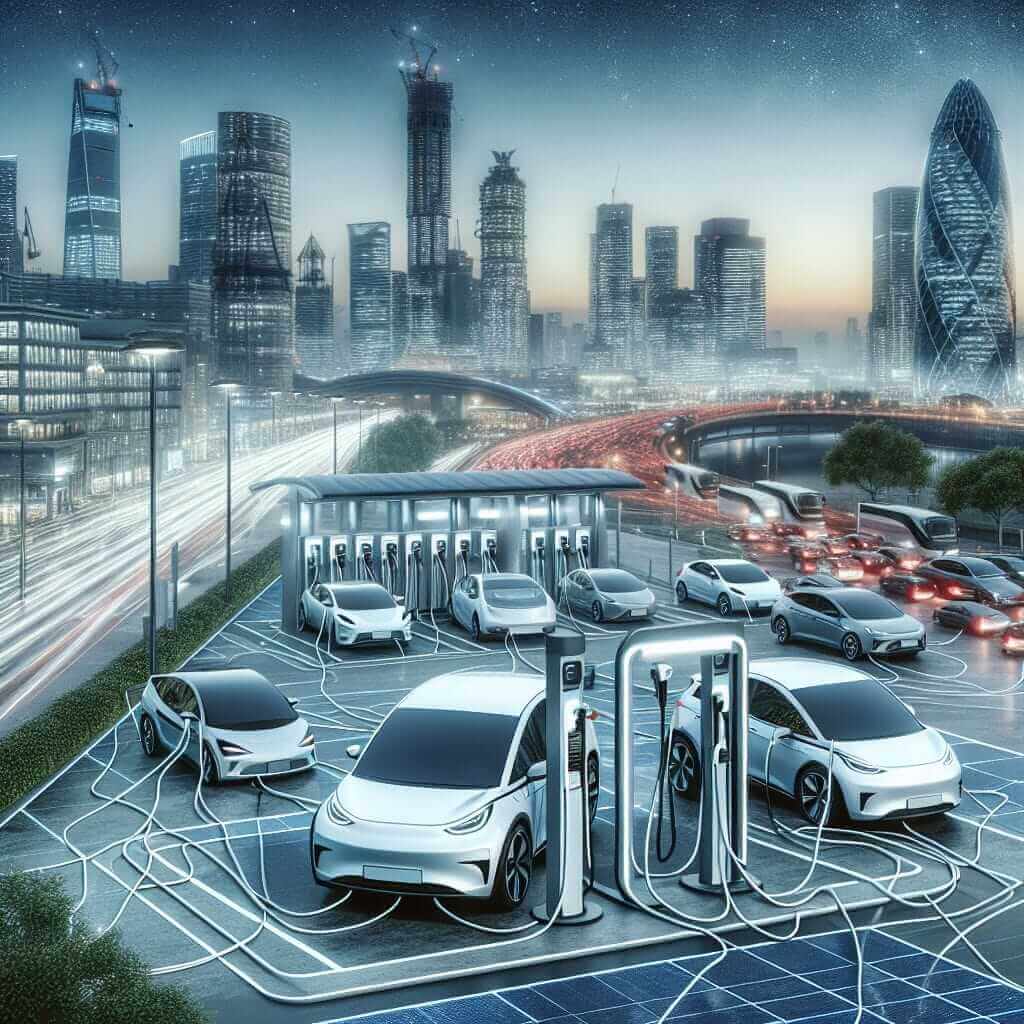The IELTS Reading test is a vital component of the overall IELTS exam, aimed at assessing a candidate’s reading comprehension skills through various complex texts. A recurrent topic that could potentially appear in the test is the transition to electric vehicles (EVs). This topic is highly relevant due to its global importance in the context of climate change and technological advancements. Understanding the challenges associated with transitioning to electric vehicles helps candidates discuss and analyze real-world problems, making it a potentially common subject in future exams.
By practicing with such materials, candidates can improve their abilities to identify key information, understand detailed arguments, and enhance their vocabulary and grammar skills, all of which are crucial for scoring high in the IELTS Reading test.
Challenges of Transitioning to Electric Vehicles
Reading Passage
As the world grapples with the impacts of climate change, transitioning to electric vehicles (EVs) has emerged as a crucial element of the global strategy to reduce carbon emissions. Despite the clear environmental benefits, several challenges impede a smooth transition.
One of the most significant obstacles is the lack of widespread charging infrastructure. Unlike gasoline stations, which are ubiquitous, EV charging stations are still relatively scarce, particularly in rural and suburban areas. This scarcity creates ‘range anxiety’ among potential EV buyers, who fear running out of battery power far from a charging point.
The initial cost of purchasing an electric vehicle is another barrier. Although EVs typically have lower running costs over their lifetimes, the upfront price is still higher than that of traditional gasoline vehicles. This cost disparity is mostly due to the expensive batteries that power electric vehicles. Despite recent advances in battery technology, reducing these costs to a level comparable with internal combustion engine vehicles remains challenging.
Battery efficiency and life span also present issues. Current battery technologies often require several hours to recharge fully, which is significantly longer than refueling a gasoline vehicle. Moreover, the batteries degrade over time, reducing an EV’s range and necessitating costly replacements.
Furthermore, the environmental impact of battery production is a concern. While EVs contribute to lower emissions during their use, the production of lithium-ion batteries involves mining processes that can cause significant environmental harm. This paradox calls into question the overall environmental footprint of electric vehicles.
Lastly, the transition to electric vehicles requires substantial policy support and regulatory changes. Governments must implement incentives such as tax breaks and subsidies to encourage consumers to purchase EVs. Additionally, new regulations may be needed to standardize charging infrastructure and ensure its reliability and accessibility.
In conclusion, despite their potential for reducing carbon emissions, electric vehicles face numerous barriers that need addressing. Widespread adoption will depend on overcoming these challenges through technological advancements, economic incentives, and comprehensive infrastructure development.
Questions
Multiple Choice
-
What is one of the main obstacles to the widespread adoption of electric vehicles?
- A. Increased traffic congestion
- B. Lack of charging infrastructure
- C. Limited driving expertise
- D. Higher air pollution levels
-
Why might some potential buyers be hesitant to purchase an electric vehicle?
- A. Higher fuel costs compared to gasoline vehicles
- B. The complexity of driving electric vehicles
- C. Fear of running out of battery power far from a charging station
- D. Lack of government support
True/False/Not Given
- The initial cost of buying an electric vehicle is higher than that of a gasoline vehicle.
- Current battery technologies allow for quick recharging times comparable to gasoline refueling.
- Electric vehicles create more emissions during their use compared to gasoline vehicles.
Matching Information
-
Match the challenges (1-4) with the provided solutions (A-D):
- Charging infrastructure
- Initial cost
- Environmental impact of production
- Policy support
Solutions:
- A. Incentives like tax breaks
- B. Advances in battery technology
- C. Regulatory changes for standardization
- D. Development of more charging points
Answer Keys
- B
- C
- True
- False
- False
- Charging infrastructure – D, Initial cost – B, Environmental impact of production – C, Policy support – A
Common Mistakes
- Misinterpreting details: Ensure you read each passage carefully, as small details can change the meaning significantly.
- Speed and accuracy: Practice balancing speed and accuracy. Rushing through the text can lead to mistakes, but you also need to manage your time efficiently.
Vocabulary: Important Terms
- Range anxiety (noun): /reɪndʒ æŋˈzaɪəti/ – The fear of running out of battery power in an electric vehicle before reaching a charging station.
- Ubiquitous (adjective): /juːˈbɪkwɪtəs/ – Present, appearing, or found everywhere.
- Subsidies (noun): /ˈsʌbsɪdi/ – Financial support provided by the government.
Grammar Focus: Key Structures
- Comparative forms: Understanding how to use comparative adjectives is crucial when discussing differences, e.g., “higher than,” “more significant.”
- Example: “The initial cost of purchasing an electric vehicle is higher than that of traditional gasoline vehicles.”
Advice for Practicing Reading Skills in the IELTS
To excel in the IELTS Reading test, it’s essential to practice regularly with a diverse range of topics. Focus on improving your ability to skim through texts for general meaning and scan for specific information. Develop a strong vocabulary by reading various materials and practicing new words in context. Finally, familiarize yourself with different question types by using past papers and timed practice sessions to build confidence and efficiency.

Incorporate these strategies into your study plan to enhance your reading comprehension skills and boost your overall IELTS score.
By addressing the challenges of transitioning to electric vehicles, this passage not only offers insights into a pressing contemporary issue but also provides a thoughtful and realistic practice scenario for IELTS candidates.